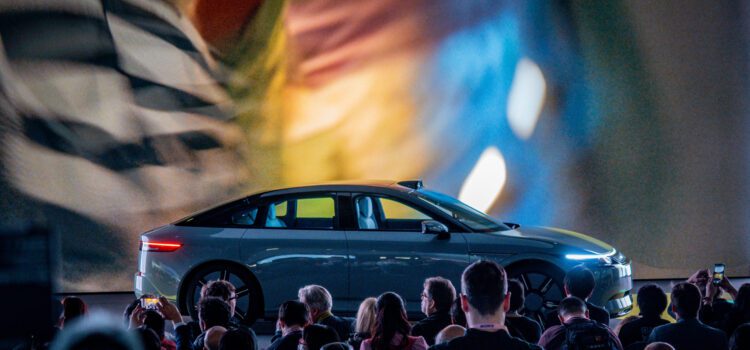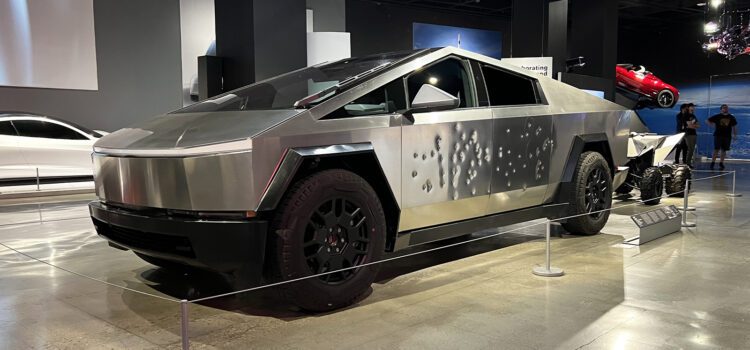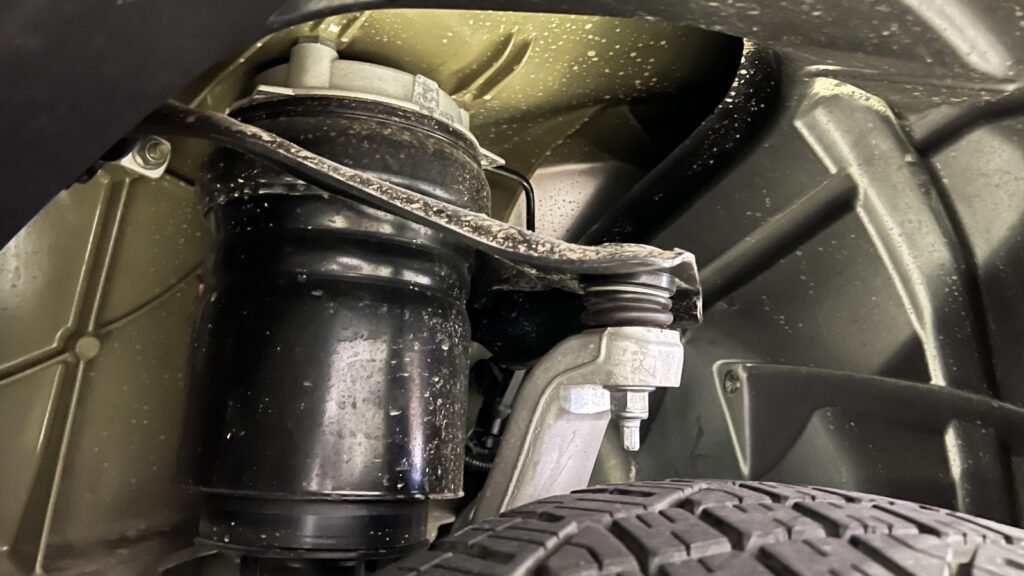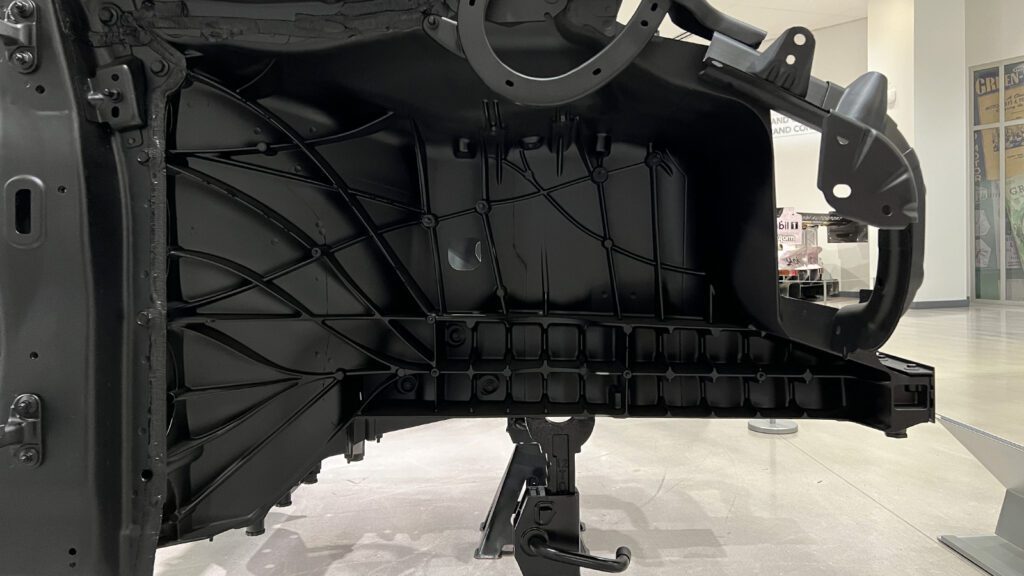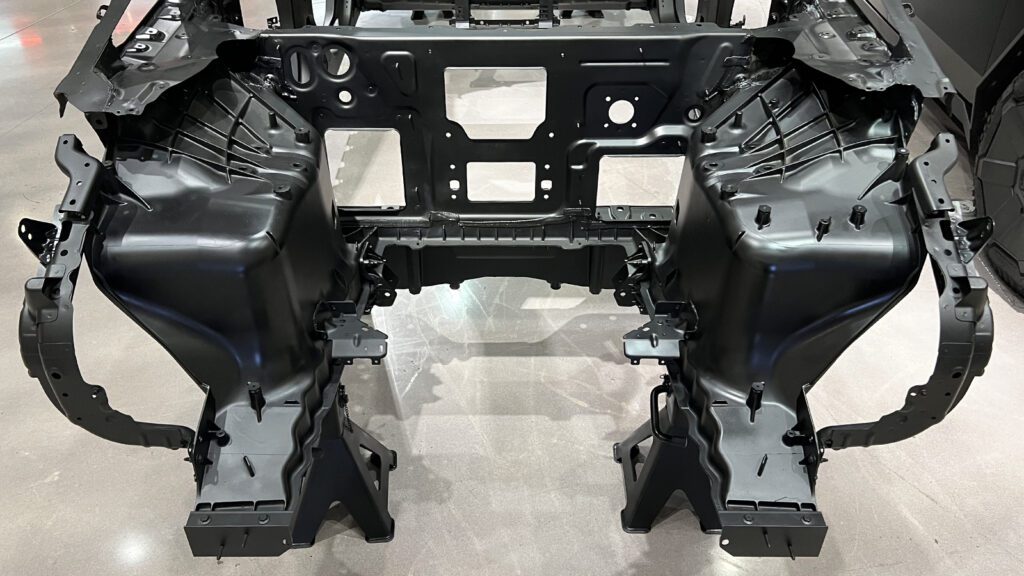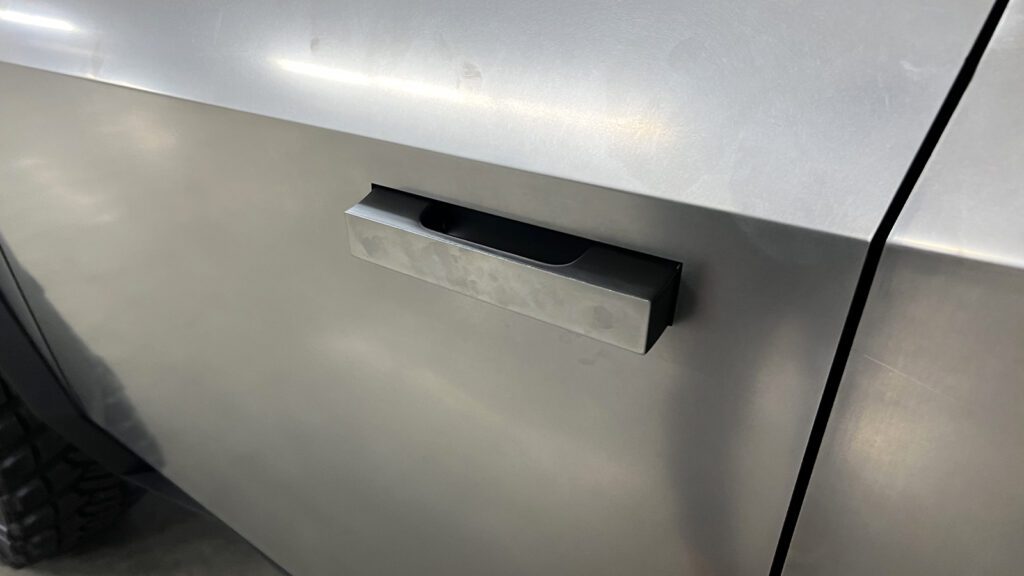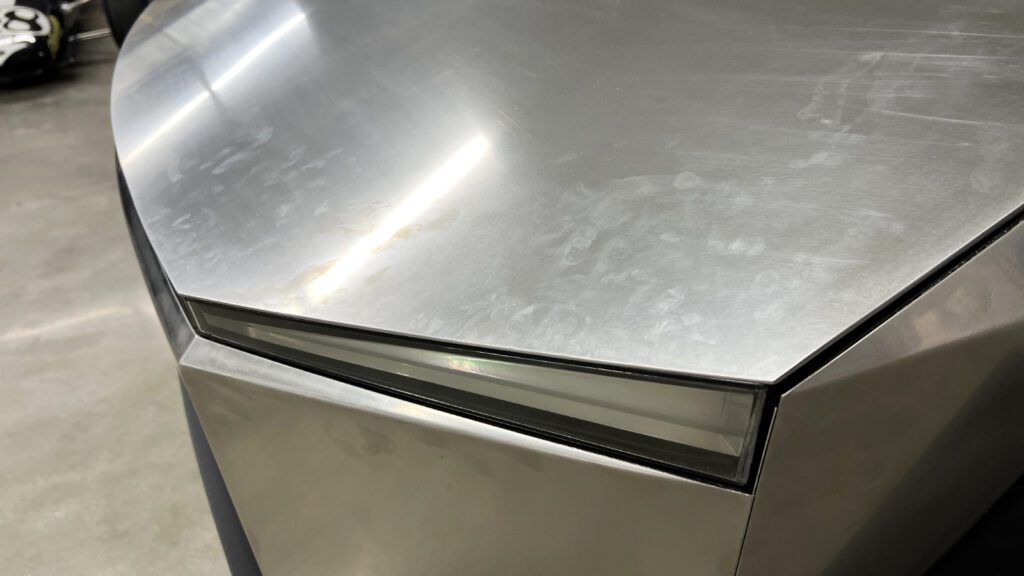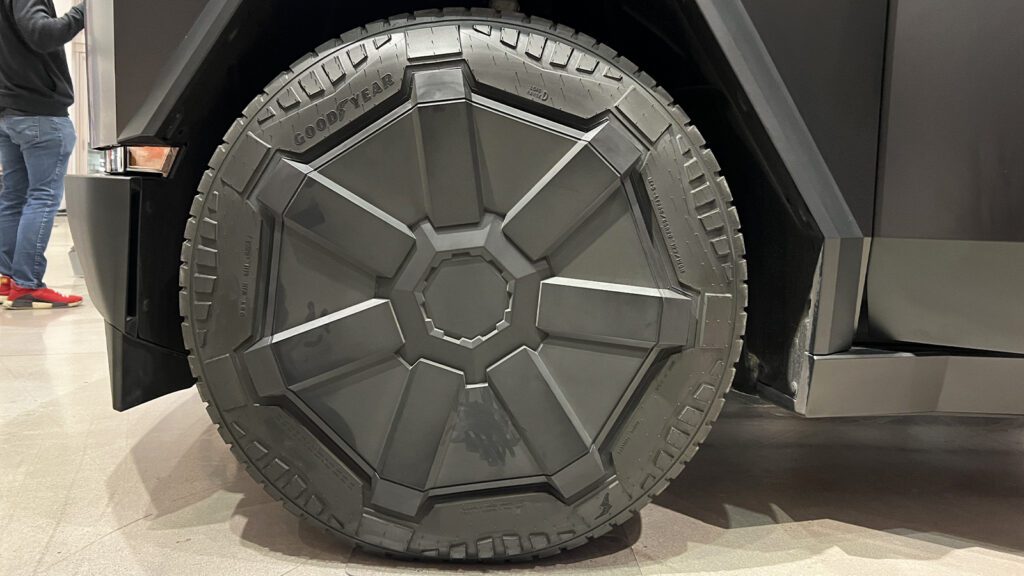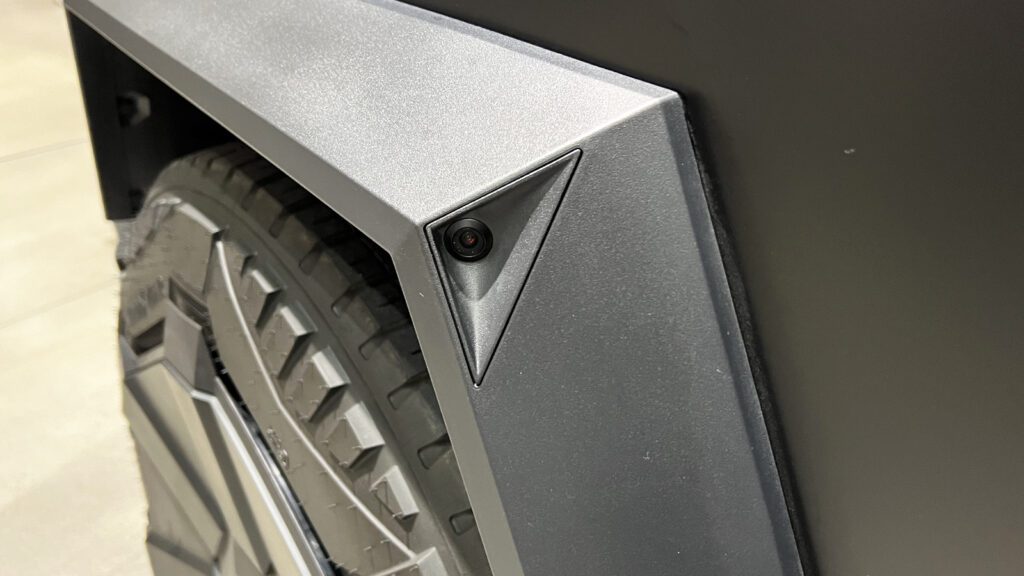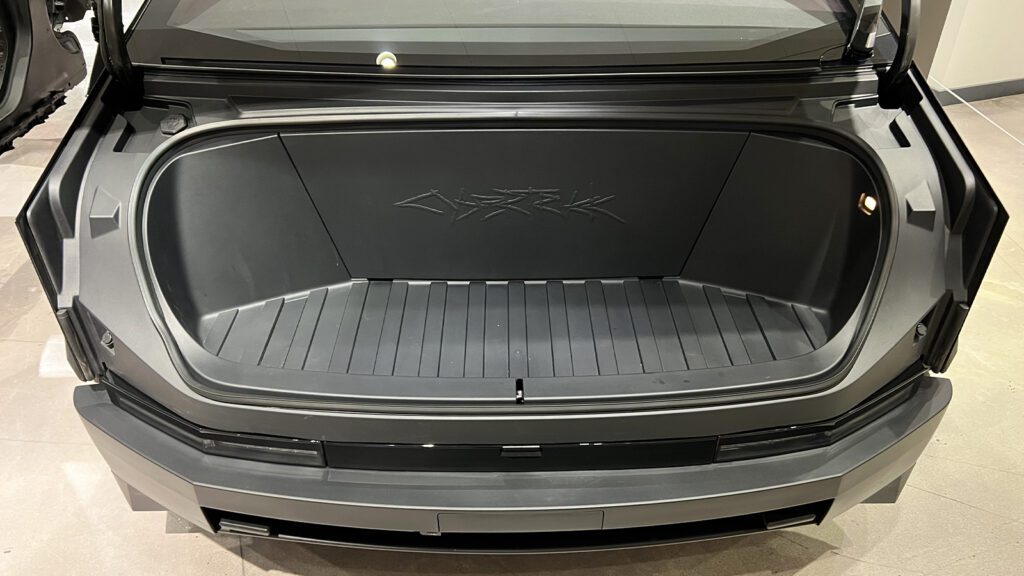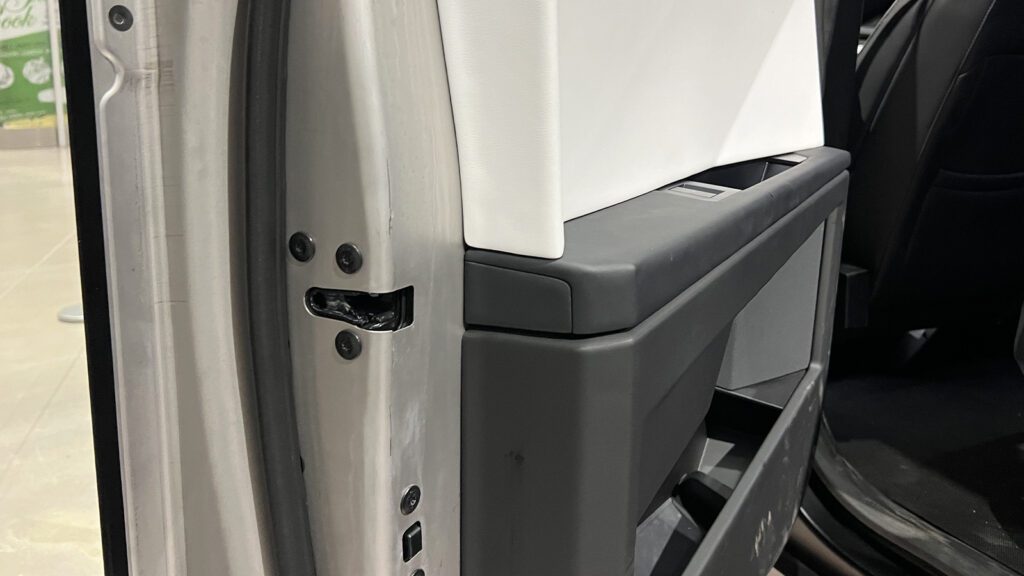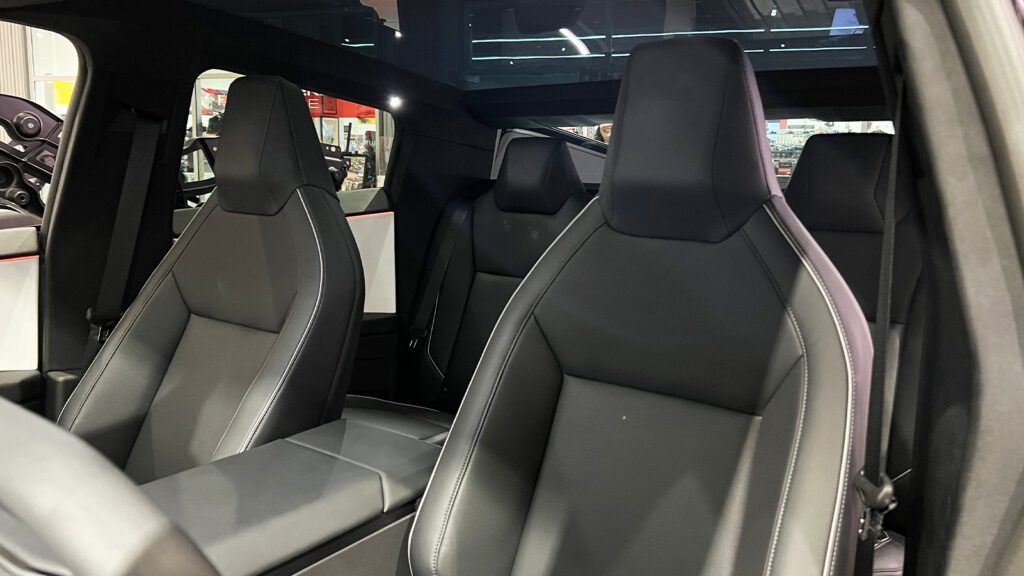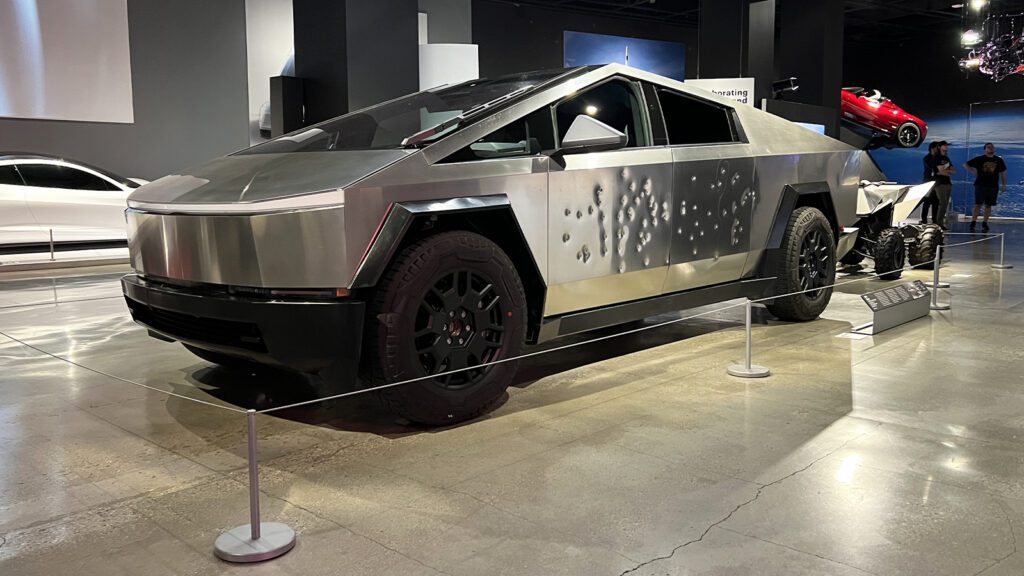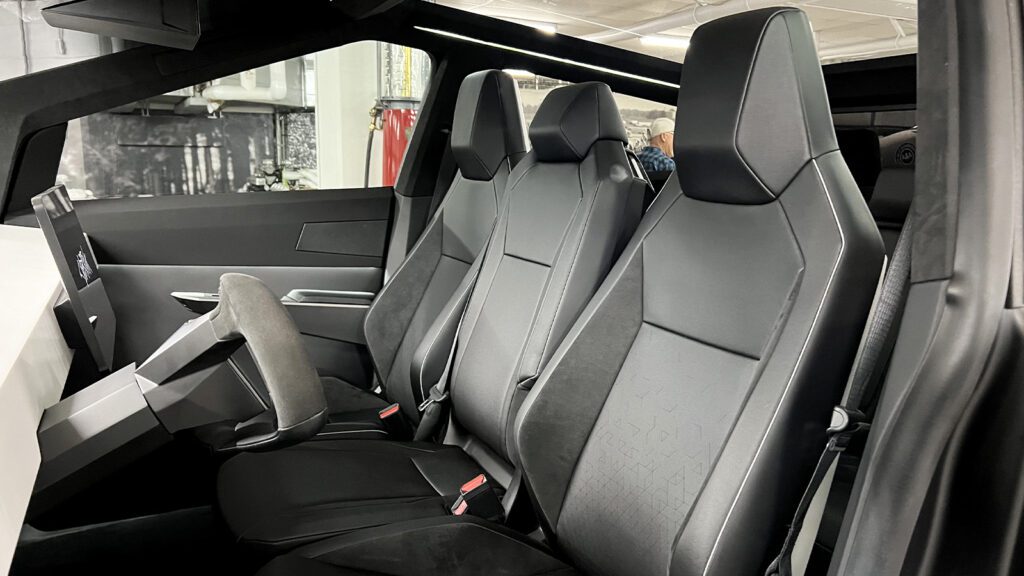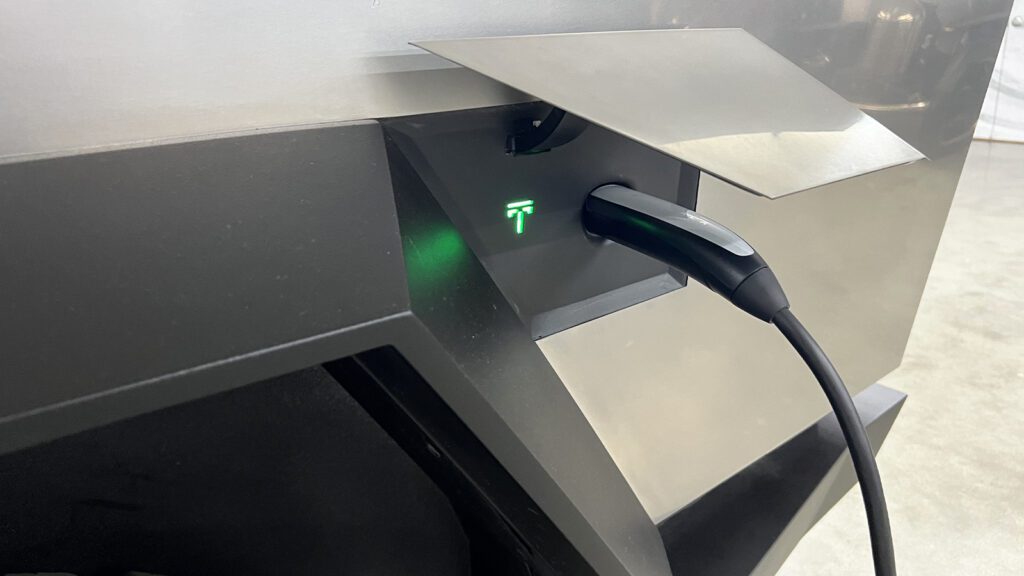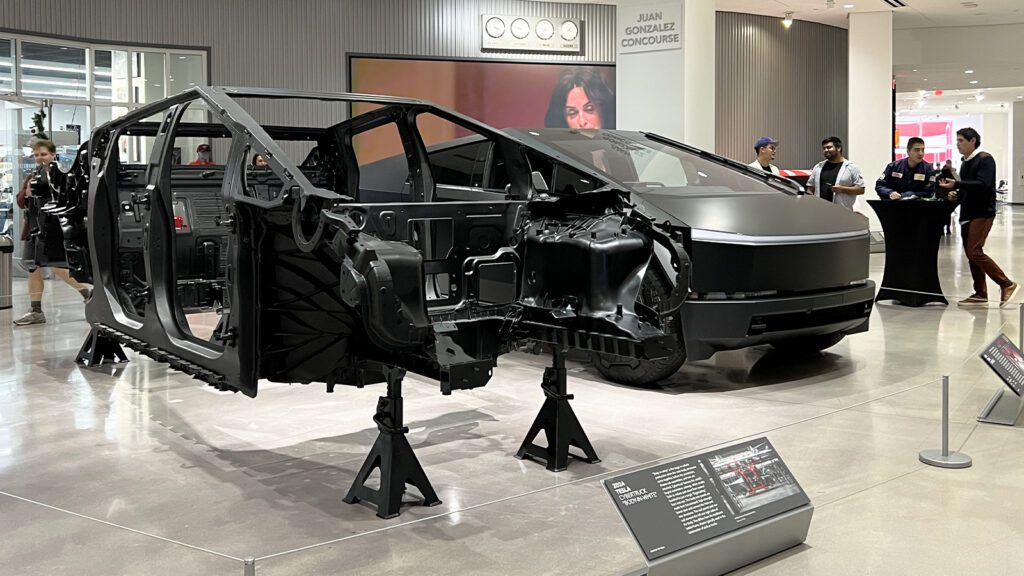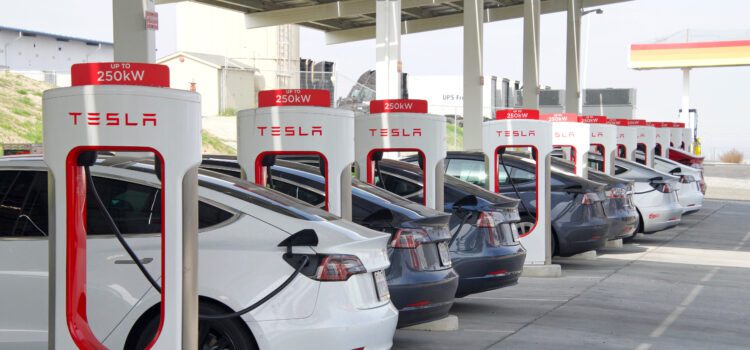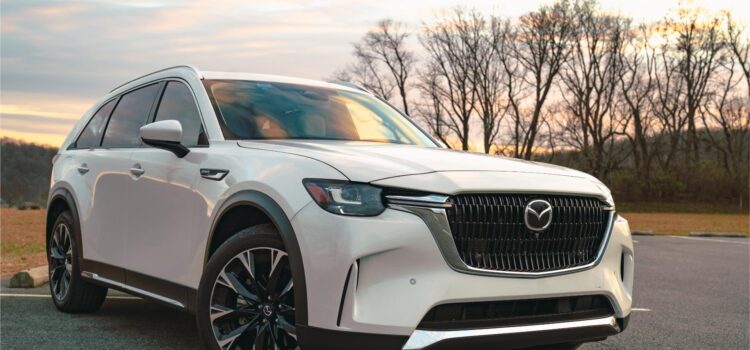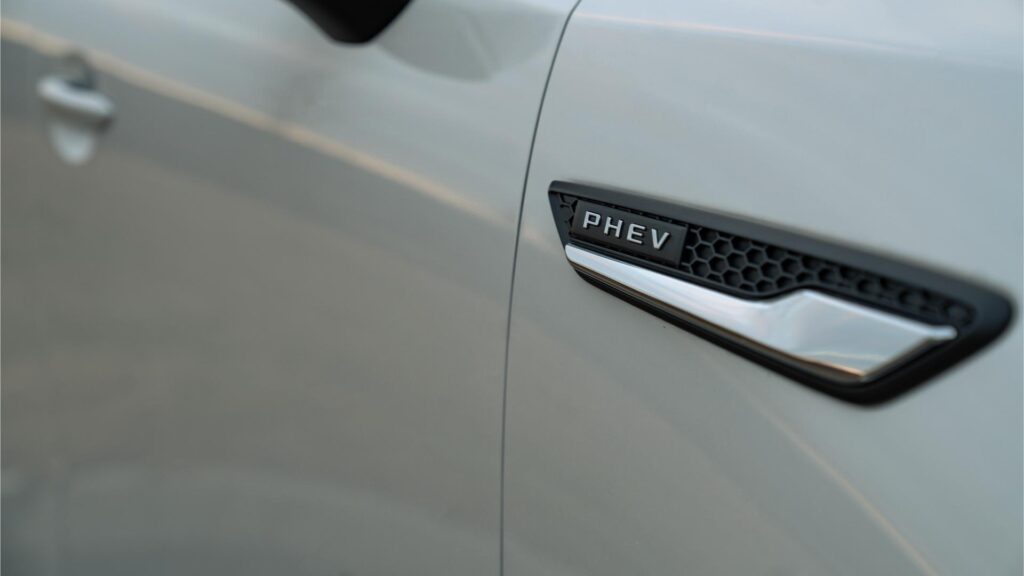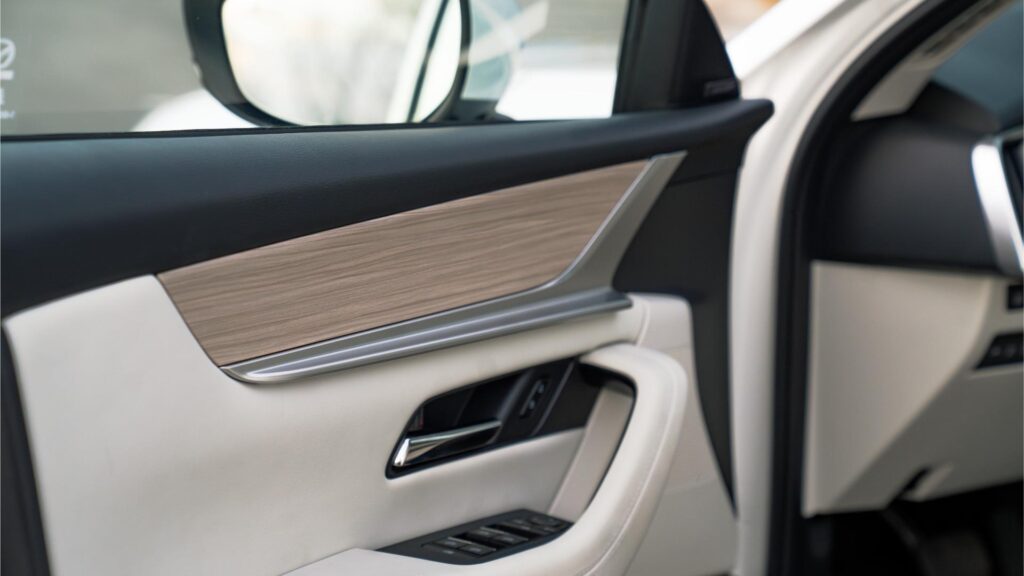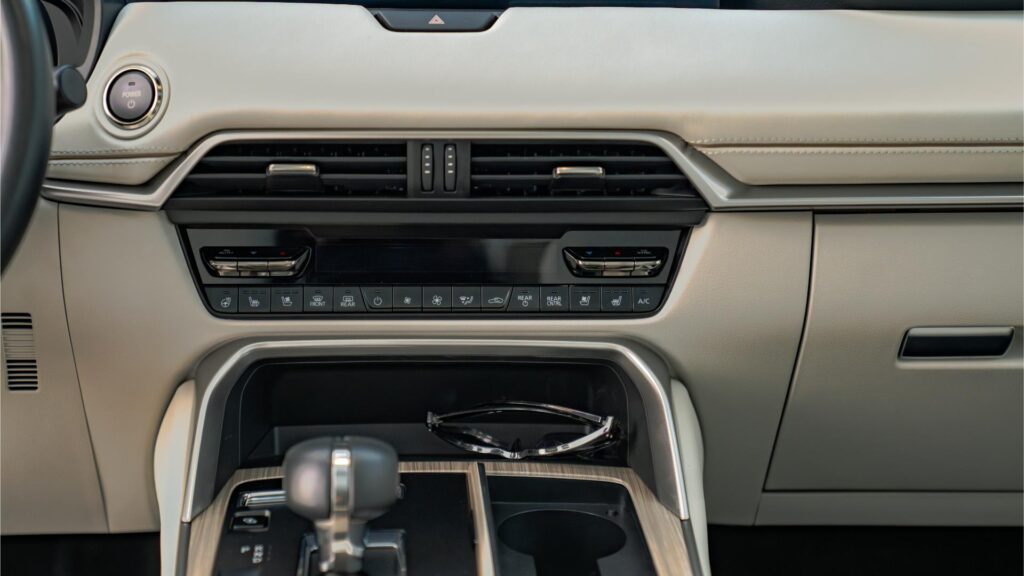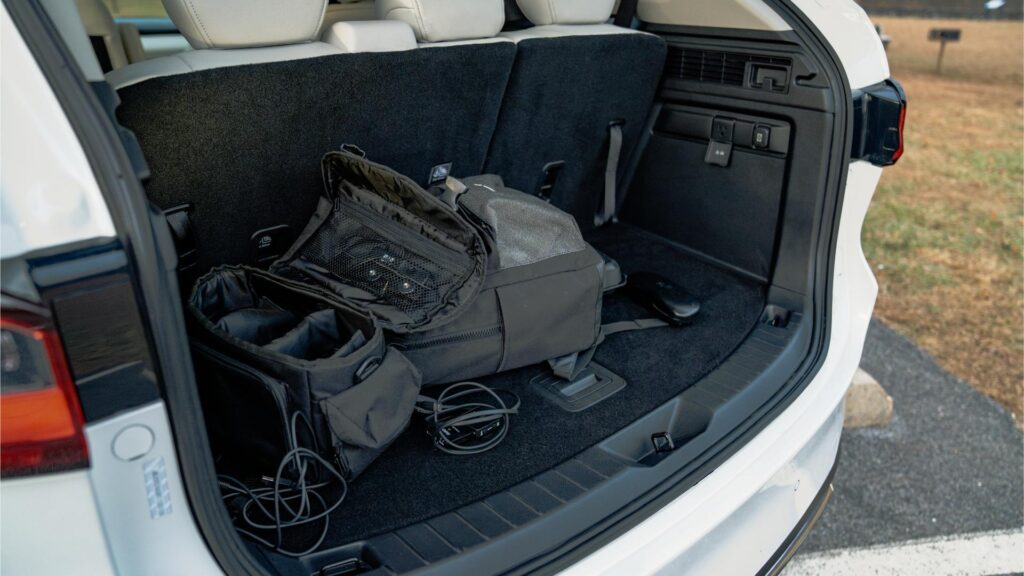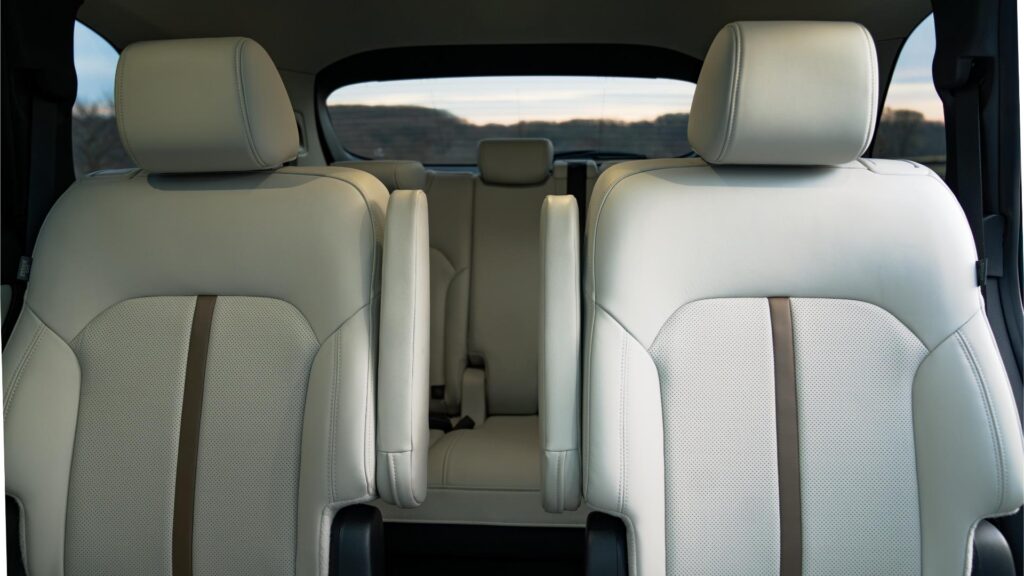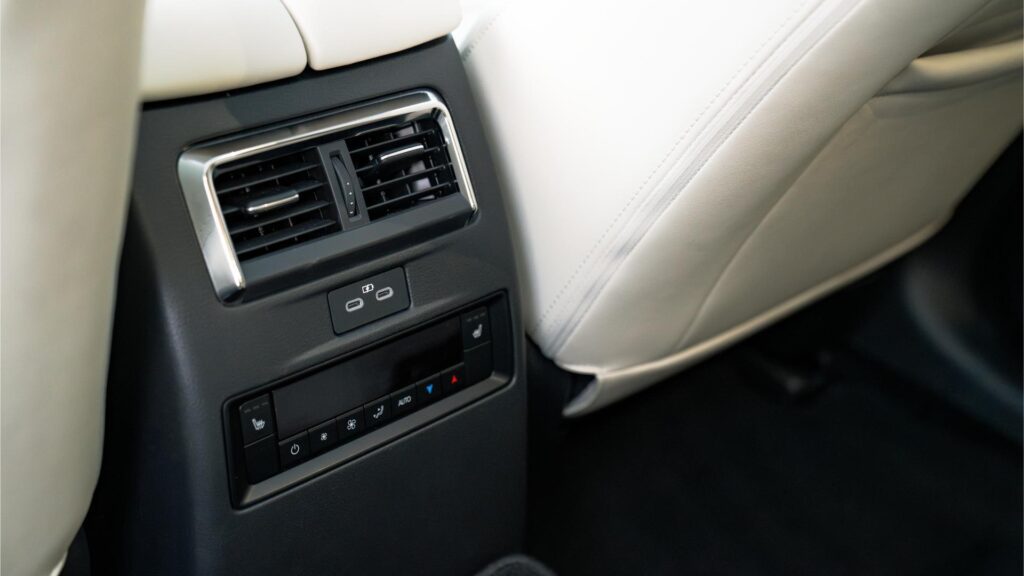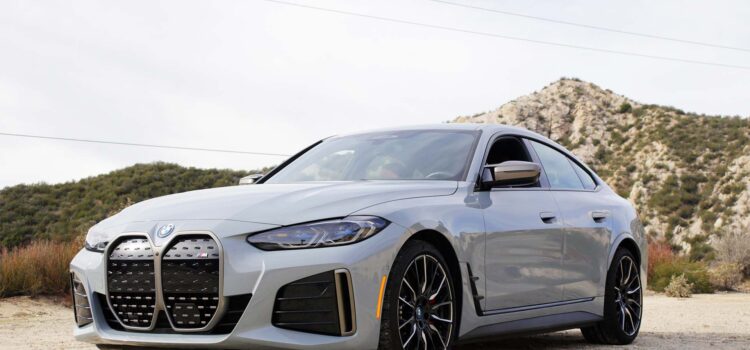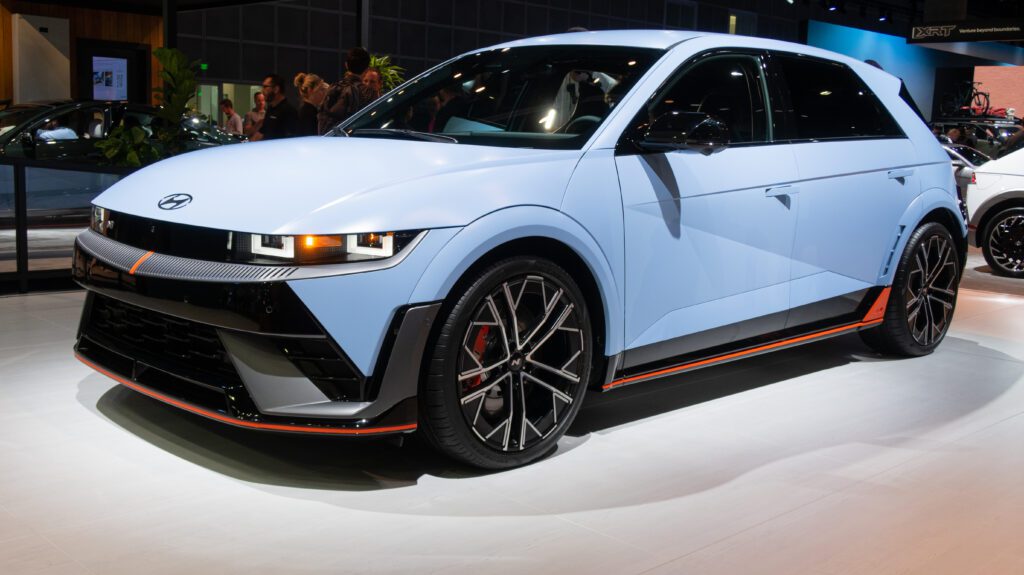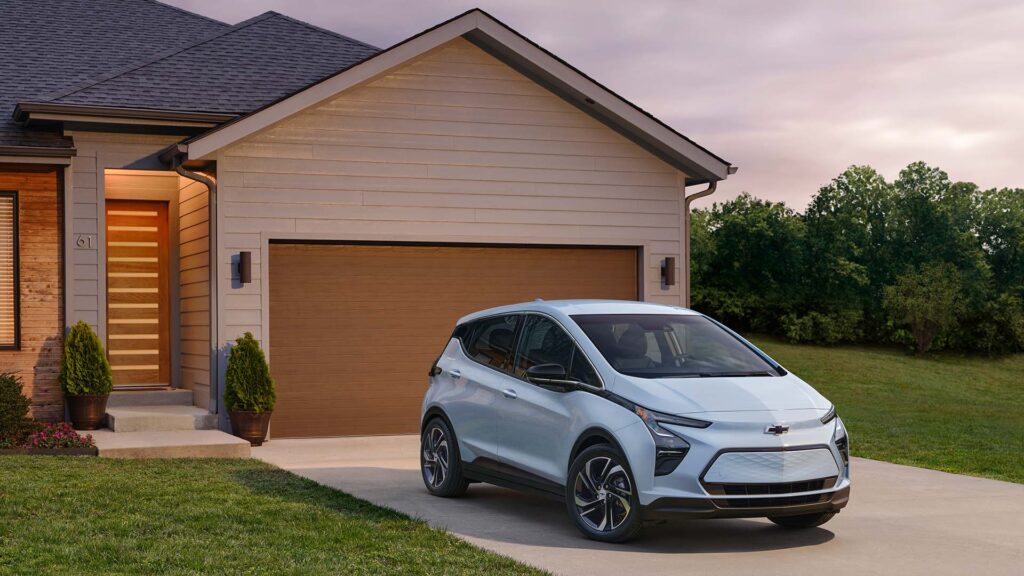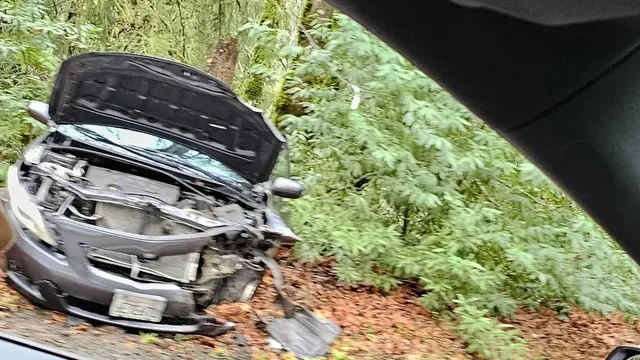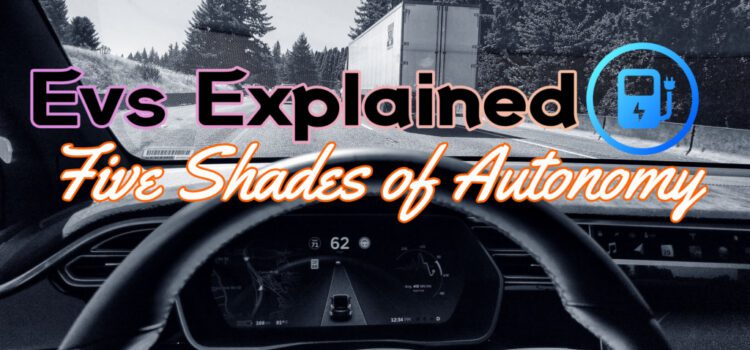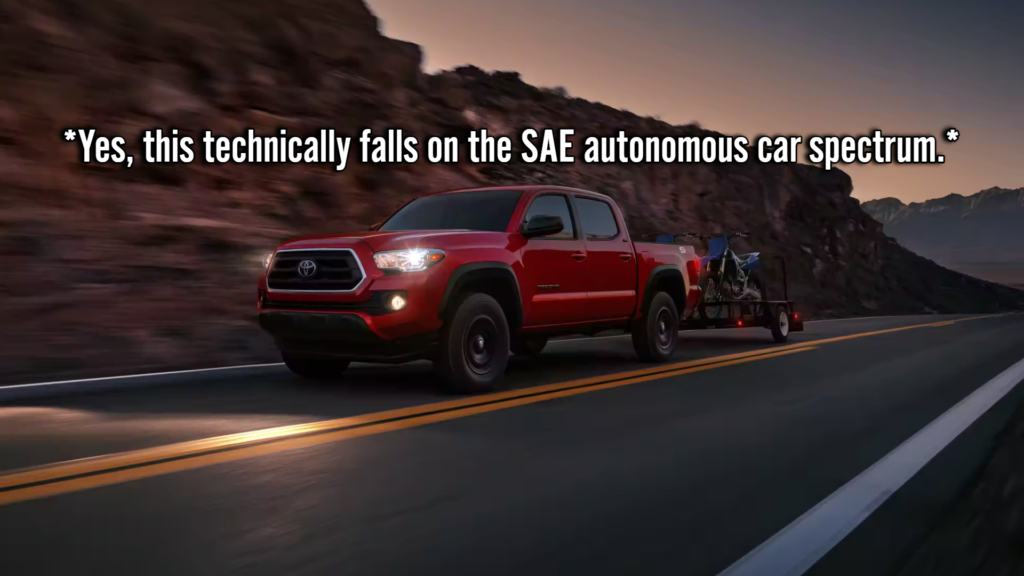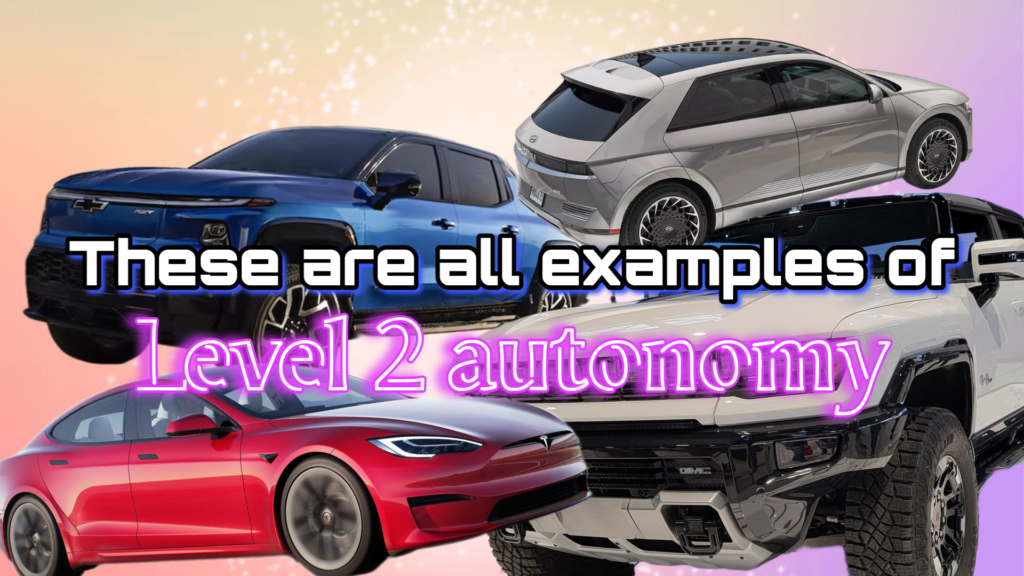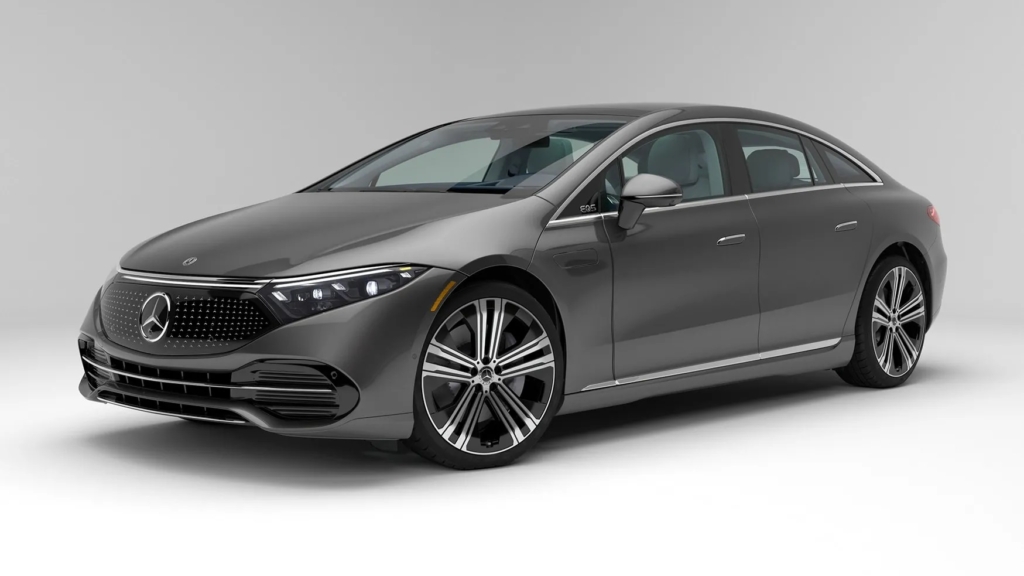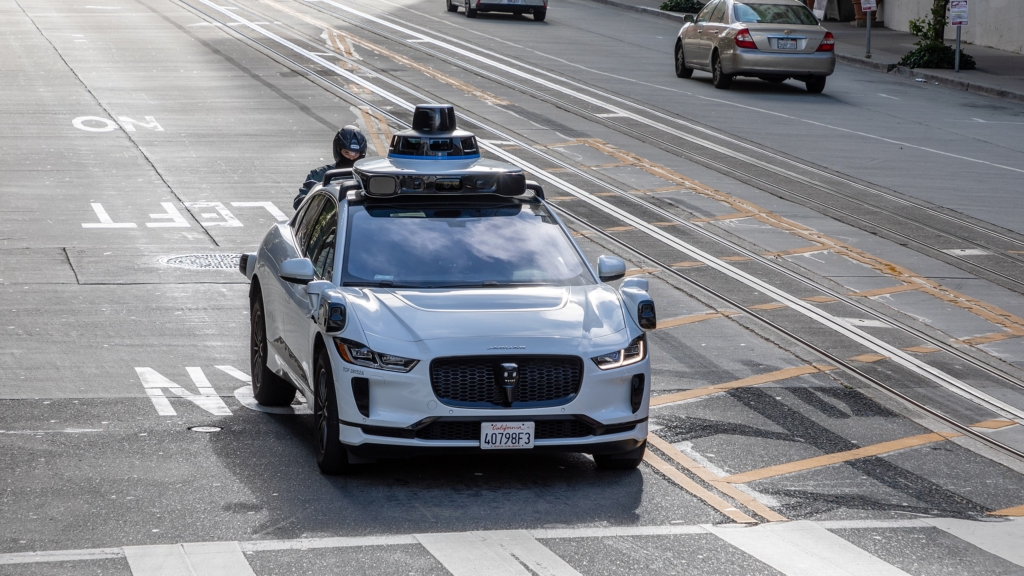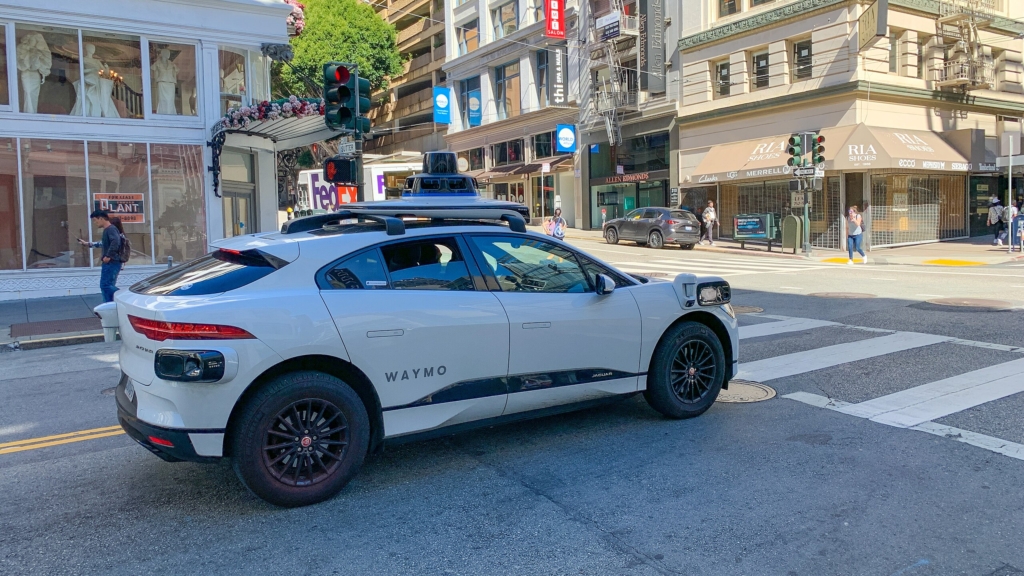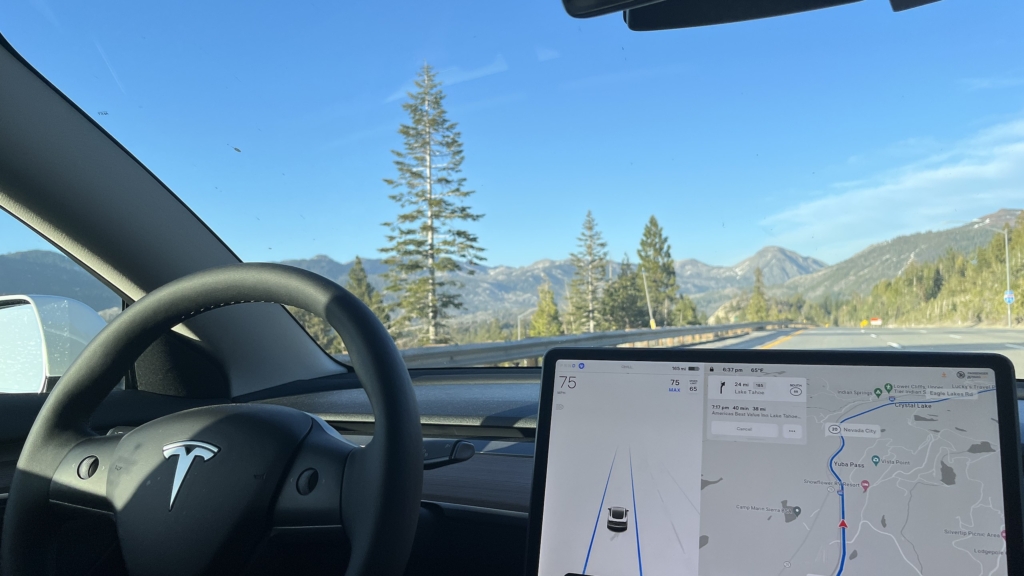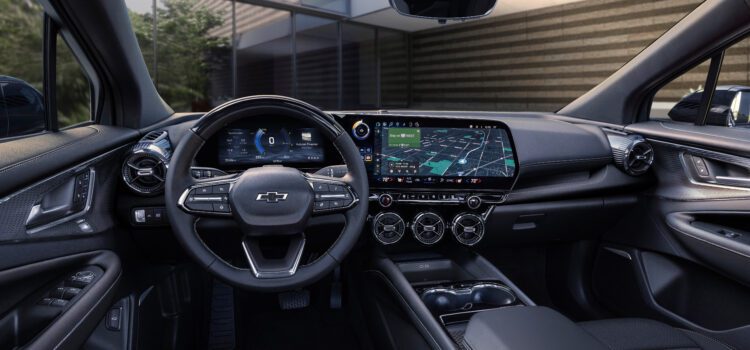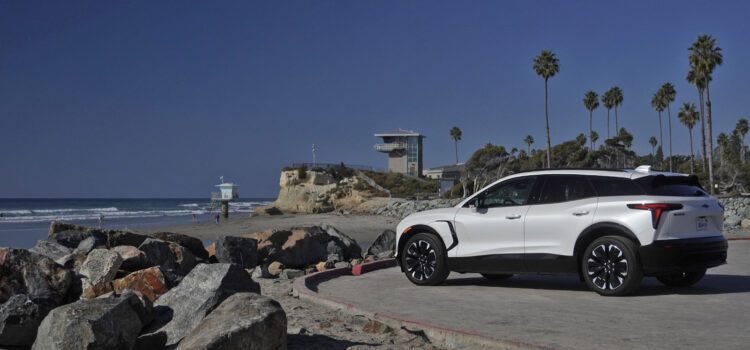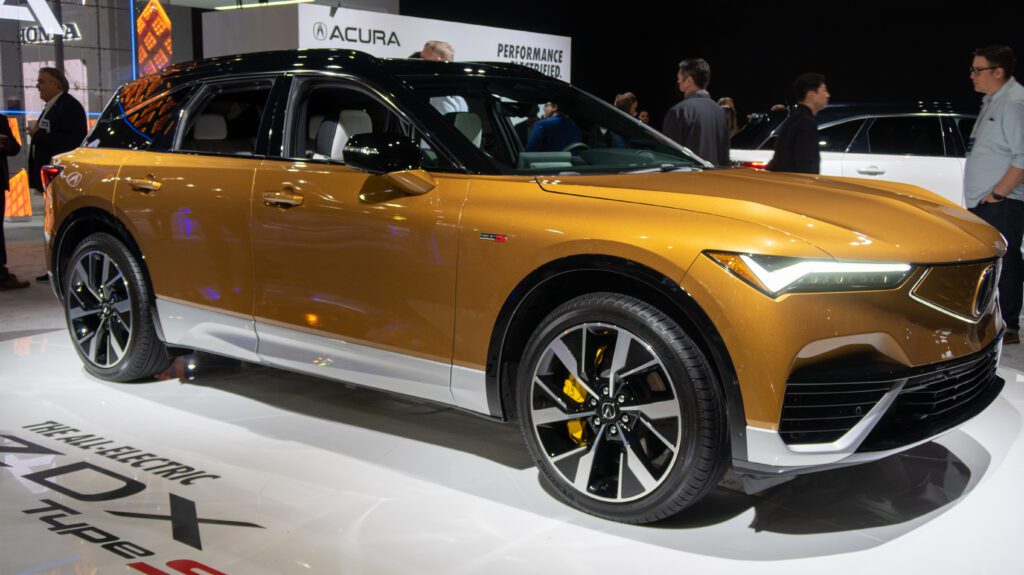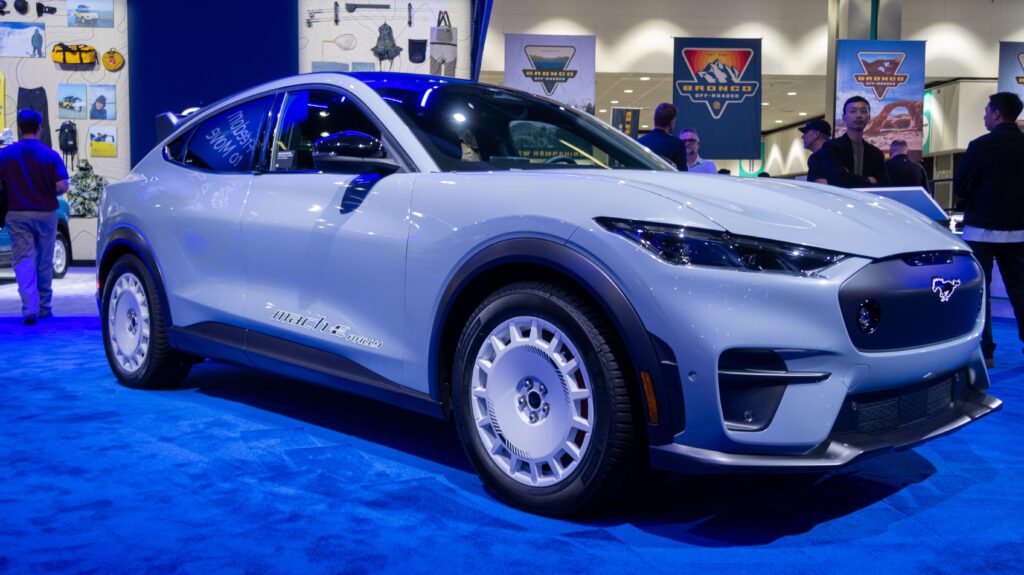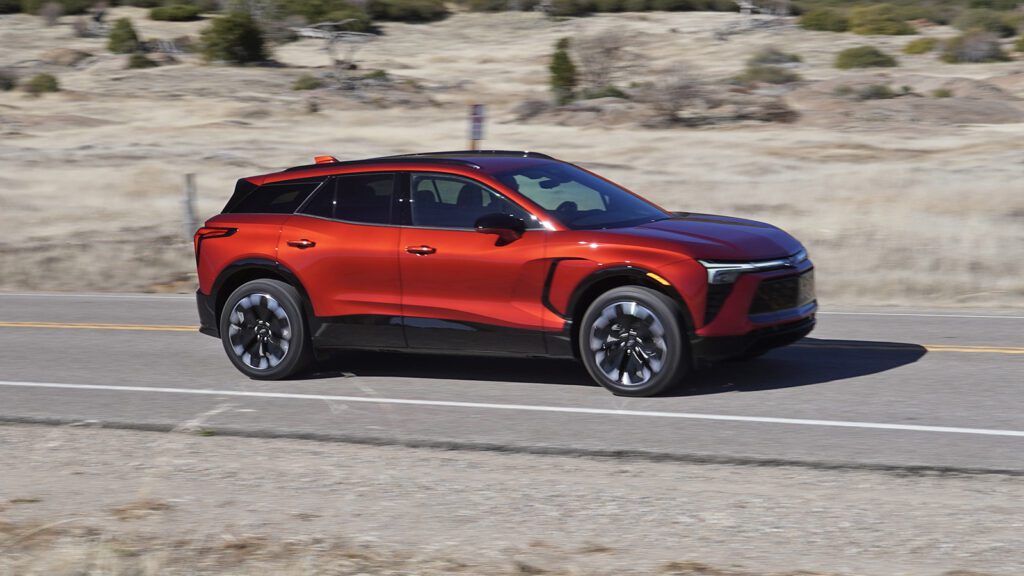CES 2024: Sony and Honda show off updated Afeela electric car
At CES 2024, Sony and Honda unveiled the prototype Afeela electric car. Sony Honda Mobility (SHM) revealed details at the 2023 Japan Mobility Show, but finally, we have a real car on our hands! Well, not in our hands, but in the media’s hands in general. And wow, it’s quite the stunner in person.
This variant of the Afeela is the first time we see more than an announcement, so even though SHM was founded in September 2022, it’s now more than lip slap. These two industry behemoths are more than capable of delivering an excellent electric car; judging by the gorgeous exterior, tastefully premium interior, and a big dollop of fresh specs, the Afeela hits that spot.
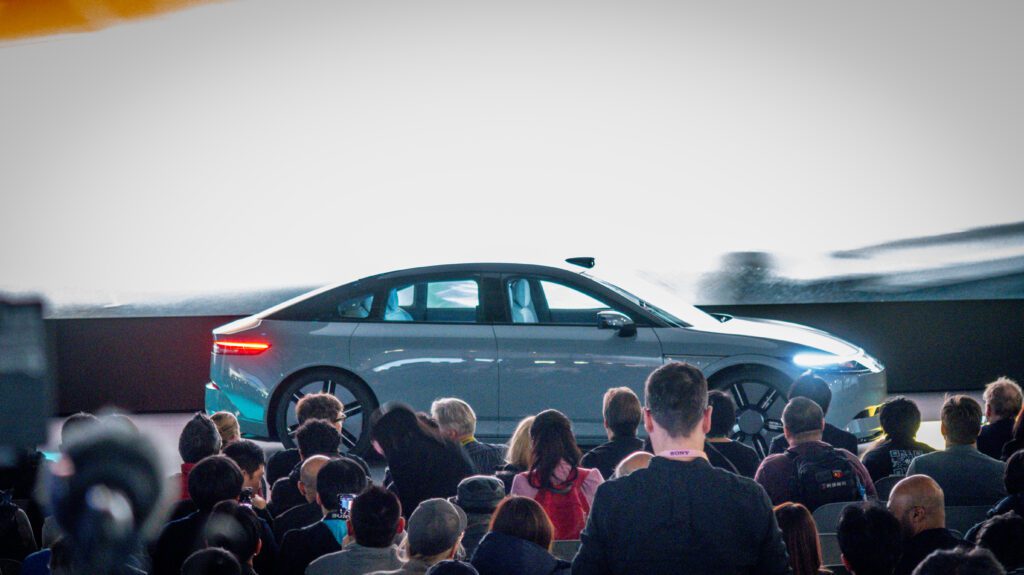
Specs overview
After much waiting, specs for the Afeela have now trickled out, from dimensions to motor power output and tire sizing! Check out what’s now known below.
[Button id=”411″]
| Length | 4,915mm (16.14 ft.) |
| Width | 1,900mm (6.23 ft.) |
| Height | 1,460mm (4.78 ft.) |
| Wheelbase | 3,000mm (9.84 ft.) |
| Drivetrain | AWD |
| Front Motor Type | Interior Permanent Magnet Synchronous Motor |
| Front Motor Power | 180kW |
| Rear Motor Type | Interior Permanent Magnet Synchronous Motor |
| Rear Motor Power | 180kW |
| Battery | Lithium-Ion |
| Battery Capacity | 91kWh |
| DC charging | 150kW |
| AC charging | 11kW |
| Front Suspension | Double Wishbone |
| Rear Suspension | Multi-Link |
| Suspension type | Air Suspension |
| Front Tires | 245/40R21 |
| Rear Tires | 275/35R21 |

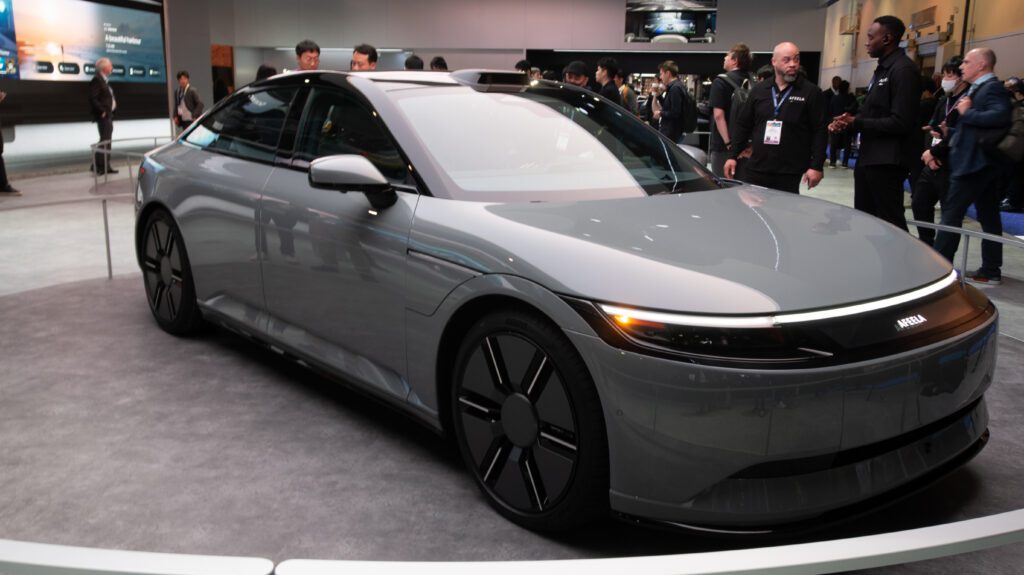
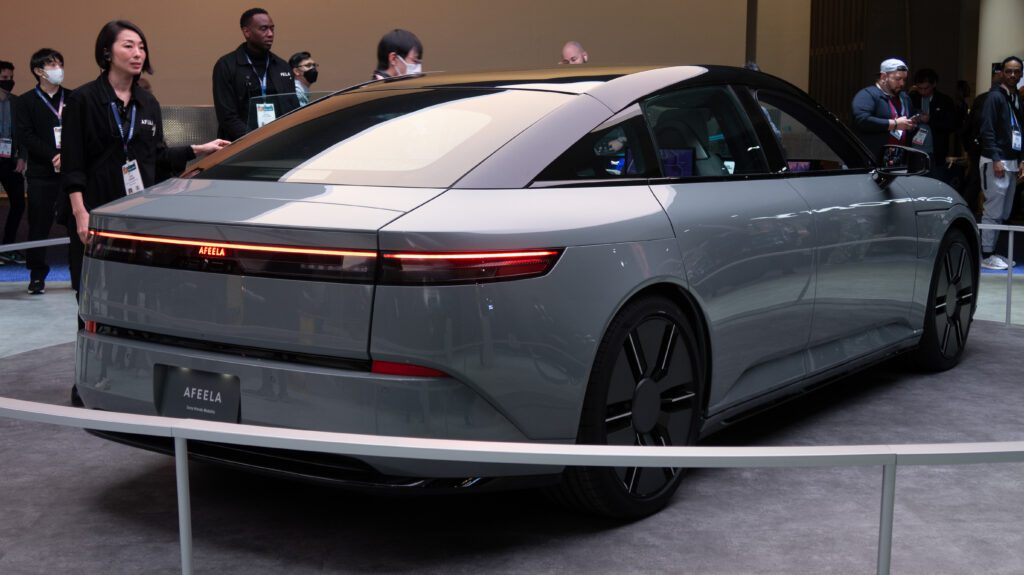
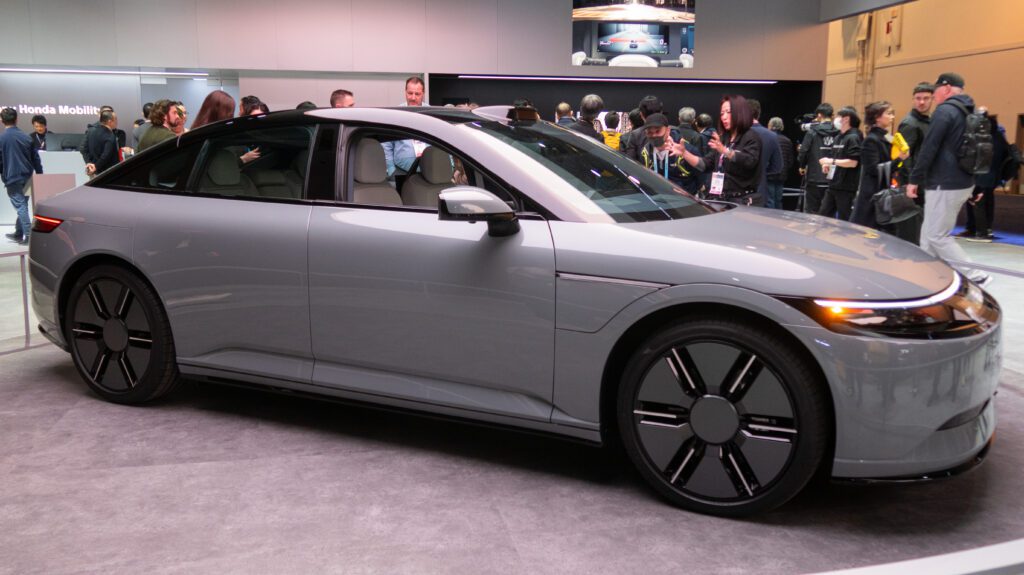
Afeela AI and ADAS
SHM calls this “mobility intelligence.” Revealed at CES 2024, the company plans to combine sensors and ADAS technology to deliver a car that redefines the relationship between people and mobility.

Sensors and Cameras — 360º Vigilance
No blind spots. 360º Vigilance is not new in a car. Still, to implement some of the mentioned features and an authentic next-level driving experience for Afeela drivers, a crazy camera setup is needed. The Afeela will park upon arriving at a parking space. It will also open the door when you approach and display your destination if this is a regular trip.
Advanced Driving Assistance
With great software comes excellent hardware (Uncle Ben). Lidar, radar, and cameras band together to feed information to a litany of driving aids, with each adding a level of redundancy to one another for maximum safety netting and adaptability to a wide variety of conditions and obstacles. To support these features, the Afeela will partner with Qualcomm to achieve Level 2 /2+ and, under certain conditions, Level 3 driving autonomy. They will also use Vision Transformer (ViT) to capture and detect objects. Essentially, it’s the God of image detection for AI.
SHM and Epic Games

Stemming from a newly-minted partnership with Epic Games (sigh, yes, that Epic Games) SHM will use Unreal Engine 5.3, real-time sensing, and vehicle data to simulate external environmental conditions. This system will give drivers information about other vehicles, pedestrians, terrain, and weather, providing an immersive experience with a real purpose — safety.
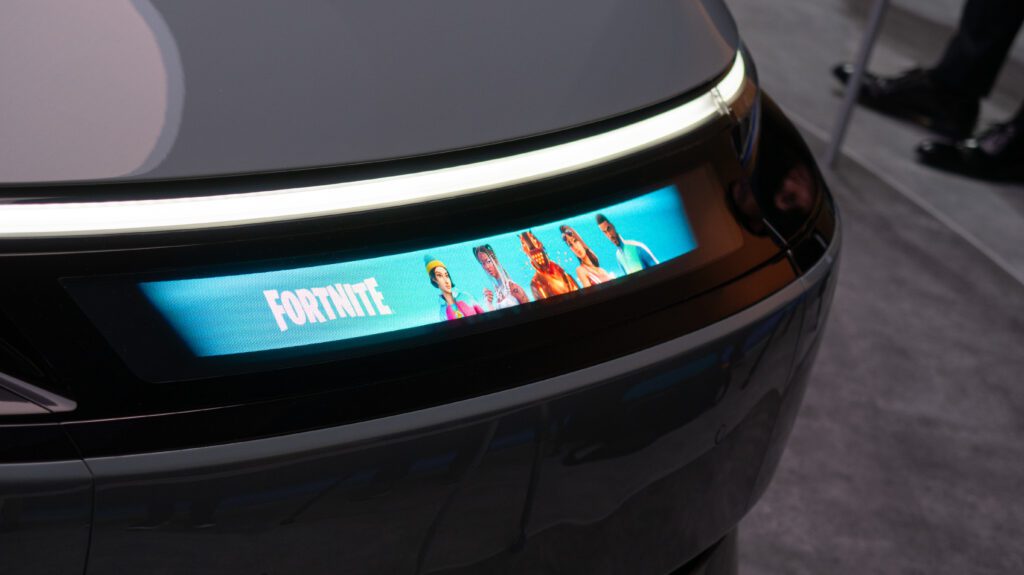
Conversational personal agent
A conversational, personal agent is also in development, using the Microsoft Azure OpenAI Service. So you will have your own personal Delamain in the future!
AI plays an essential role in achieving our goal to redefining the relationship between people and mobility, enhancing emotional user experience. Microsoft is a key partner to provide conversational personal agent. We are pleased to be working with Microsoft to realize our vision.
Izumi Kawanishi, Representative Director, President and COO, Sony Honda Mobility
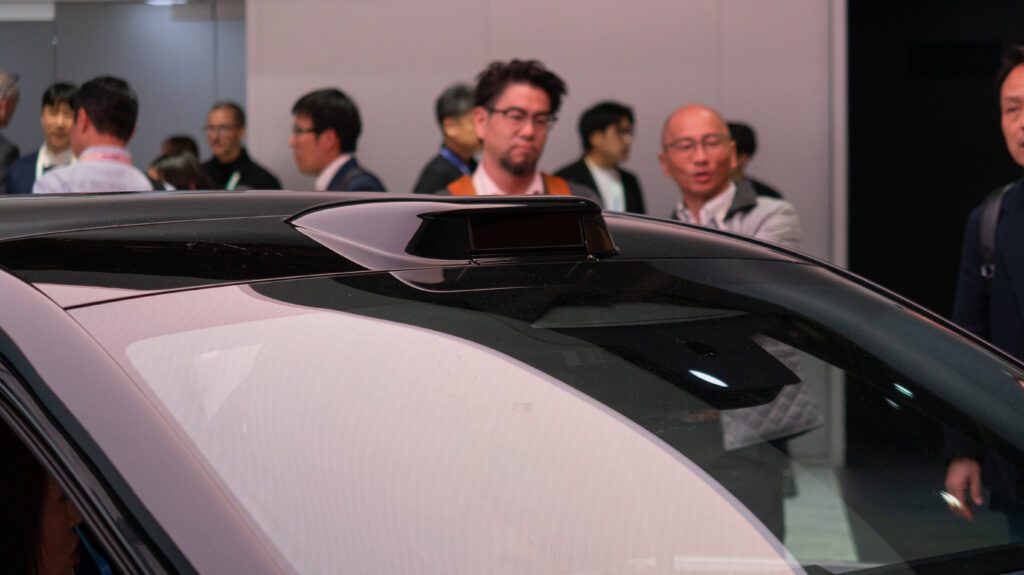
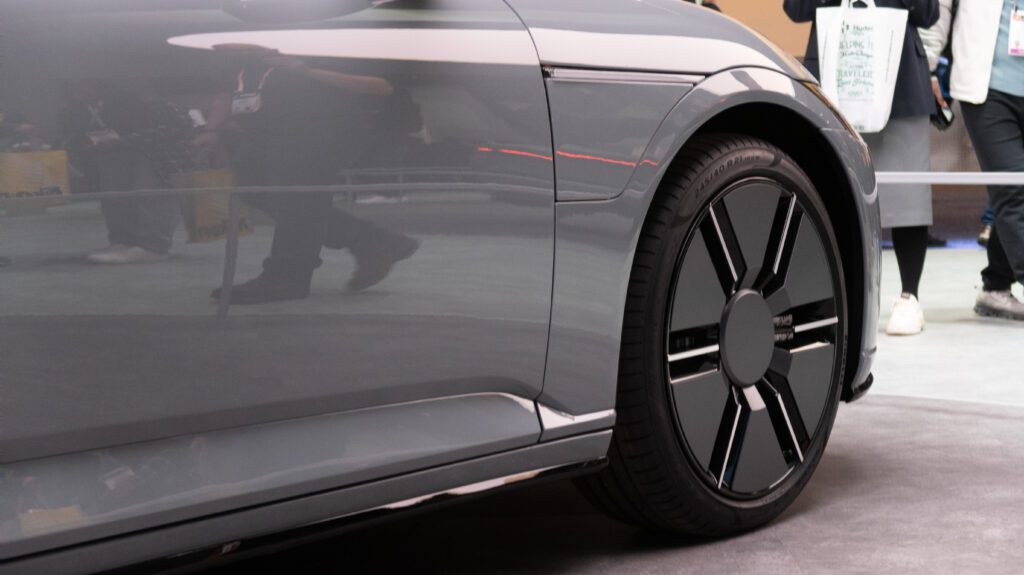


SHM and Polyphony Digital
SHM and Polyphony Digital (the developers of the Gran Turismo series) will work together to share information. This collaboration will improve player experiences in future GT games. Still, arguably more importantly, it will bring sim data, experience, intuitive operating systems, and more to the Afeela and future vehicles. SHM wants to fuse the virtual and the real, mainly in the area of human senses and emotions.
The announcement at CES 2024 also brought great news for Gran Turismo 7 fans, as the Afeela will be included in a patch update for GT7 later this year (release date TBA.)
Afeela Co-Creation Program

SHM’s Afeela Co-Creation Program will allow developers and creators to work on applications and services running on the Afeela. Android Automotive OS will be the operating environment for apps.
- Contents of Media Bar
- Themes on panoramic screens
- e Motor sound
- Additional information on maps
- Any application
Spatial audio
Of course, it wouldn’t be a Sony car without spatial audio. Honda’s mobility audio environment expertise with Sony’s renowned spatial audio craftsmanship maximizes multiple speakers throughout the vehicle for an unimaginably immersive experience.
Afeela production model
And a production model is coming! SHM plans to start taking pre-orders in the first half of 2025, begin sales at the end of 2025, and deliver from spring in 2026 in North America and by the end of 2026 in Japan.


